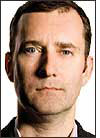This time last year, the economic picture was bleak. The world had entered what appeared to be a long and deep recession, and everybody knew it. Things look a little better now, and 2010 is becoming a year of slow recovery. One sign of this is third-quarter earnings reports from global technology leaders Intel and Oracle, both showing stronger-than-expected sales because, it seems, businesses are starting to invest in technology again.
How will RFID emerge from a year and a half of financial hibernation? Will it benefit from increased technology spending? My prediction for 2010 is that we’ll see a new, stronger, leaner RFID industry. Recession is not simply destructive. It also has a renewing and regenerating effect. It’s the forest fire of the free market, killing off all but the strongest, most innovative and best-managed businesses. And while this survival of the fittest—and, sometimes, luckiest—companies is brutal for individuals who lose jobs and benefits, it pays off for industries, clarifying winners and losers and clearing a path for superior technologies.
|
|
This doesn’t mean the past decade was lost or wasted. Visions of supply chain management applications drove the RFID revolution of the past 10 years, but these applications were not adopted at the level I—and many others—predicted. What did happen as predicted was innovation. The RFID technology of 2009 looked nothing like the RFID technology of 1999. RFID became a lot less expensive and much better, and conformed to established open standards.
The surviving RFID vendors will take these improvements and develop solutions focused on simpler applications, such as reading tags between just two places or delivering remote control as well as identification. This new RFID will help robots find their way, track tools and other high-value objects, measure how much we recycle, control lights and other low-cost devices to make them more energy-efficient, and serve as a platform for affordable ubiquitous sensing. Will vast open-loop supply-chain management RFID finally break through once these simpler applications become available? Maybe—but only time will tell.
We’ll see some new capabilities, too. RFID innovation continued, even through the recession of 2009, and new approaches to silicon and memory, antenna design and enhanced sensing capabilities will be announced in the next 12 months. These innovations will provide fewer missed reads, faster write times, greater range and additional features, such as basic temperature sensing, without adding cost.
As always, end users—the most important people in the RFID industry—will drive all this change. Just as the recession of 2009 has cleansed and strengthened the companies that make RFID, it has had the same effect on companies that use RFID. While memories of the recession linger, users will be extra-careful purchasers, buying only the technology they’re certain works and makes economic sense. 2010 will be the year both RFID vendors and users wake from hibernation. Together, they’re about to launch the next wave of the RFID revolution.
Kevin Ashton was cofounder and executive director of the Auto-ID Center.


